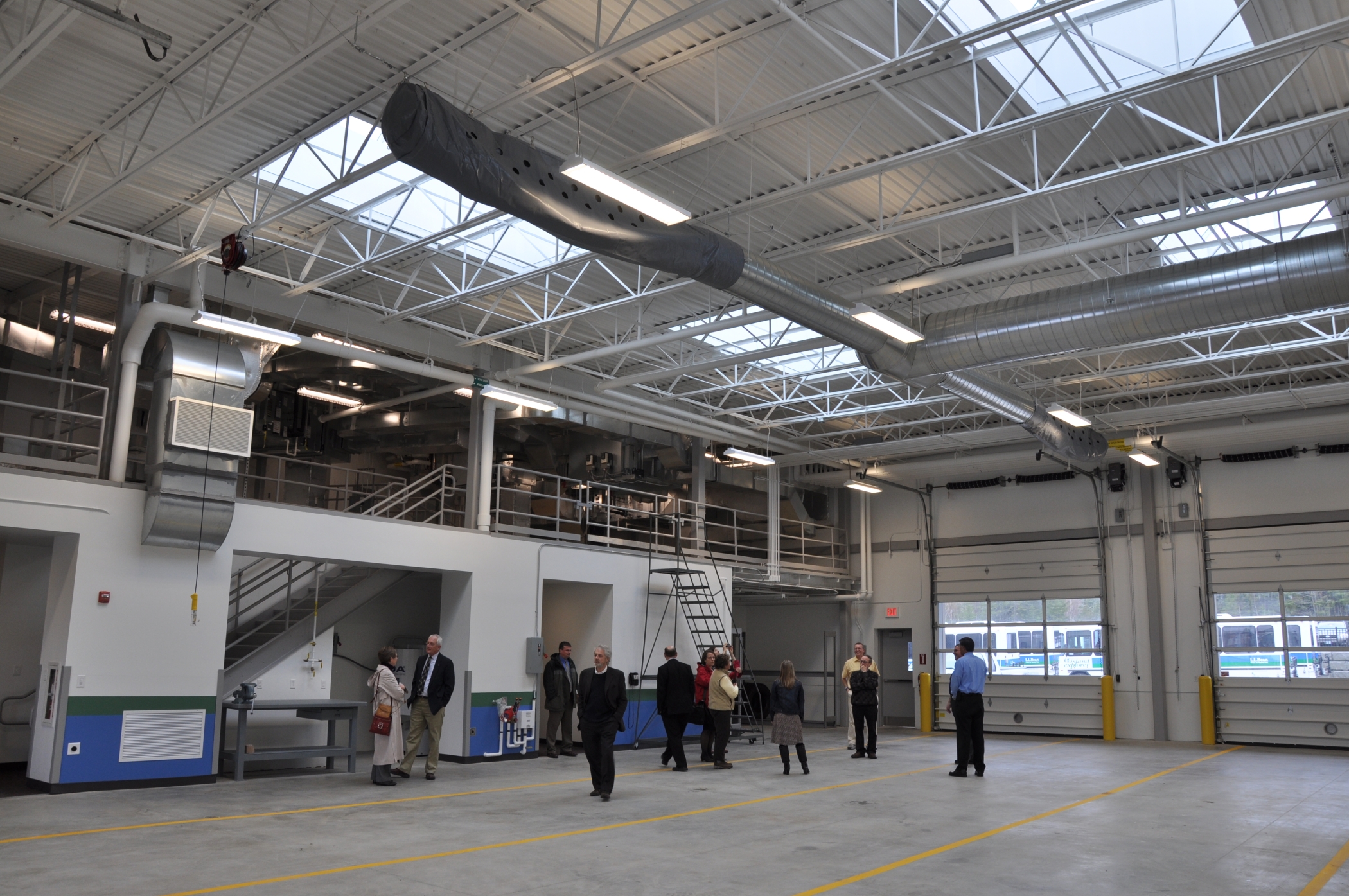Thornton Tomasetti announced that the Acadia Gateway Center administrative and maintenance facility has received LEED Gold Certification. Fore Solutions, the green building consulting company acquired by Thornton Tomasetti in 2012, provided LEED consulting services for the project located in Trenton, Maine at the gateway to Acadia National Park, one of the most visited national parks in the United States.
Fore Solutions was hired by the mechanical engineer on this project, Allied Engineering in Portland Maine, to provide LEED consulting. In this role, Fore Solutions reviewed the energy model, tracked compliance with LEED throughout design and construction and reviewed and submitted LEED documentation to the Green Building Certification Institute.
The Acadia Gateway Center administrative and maintenance facility is the first phase of a multi-phased project to implement a Transportation Demand Management Plan for Acadia National Park in order to reduce automobile traffic on Mount Desert Island. Phase I of the project consists of a 22,000-square-foot center located on Route 3 in Trenton, Maine that will function first as a bus maintenance and storage facility for the seasonal Island Explorer bus system and as a summertime park-and-ride parking lot for people who want to ride the propane-powered buses onto Mount Desert Island.
The second phase will include a visitor center and intermodal facility for the Island Explorer bus service.
Key points:
- This $14.7-million facility was funded through a combination of federal and state sources, including $11.6 million from the Federal Transit Administration.
- The Acadia Gateway Center is anticipated to reduce more than 10 million vehicle miles per year with the Island Explorer buses. Local bus routes will stop at the park and ride on-site to connect building visitors and staff to the surrounding area. Preferred parking for fuel-efficient vehicles is being provided for employees and visitors.
- Water used to wash buses is collected, filtered and reused – reducing water demand by 88%. No irrigation will be used on-site and temporary irrigation will only be provided for one year.
- The project demonstrates a 38.3% improvement in the building performance rating compared to the baseline building performance in ASHRAE-90.1-2004. Energy efficiency measures include an improved thermal envelope, high-efficiency glazing, reduced interior lighting power density and high-efficiency HVAC systems.
- Solar collectors are being used on the project to pre-heat domestic water for the domestic hot water system. Roof materials with a high SRI (Solar Reflectance Index) value have been installed on the roof.
- Materials with recycled content and local materials were used in the project wherever possible, and 70% of construction waste was diverted from landfills.
- Low-emitting adhesives, sealants, paints, carpet and composite wood materials are being used in the project.
- Accessible temperature and lighting controls have been installed for building occupants. +
Related Stories
| Feb 15, 2011
Iconic TWA terminal may reopen as a boutique hotel
The Port Authority of New York and New Jersey hopes to squeeze a hotel with about 150 rooms in the space between the old TWA terminal and the new JetBlue building. The old TWA terminal would serve as an entry to the hotel and hotel lobby, which would also contain restaurants and shops.
| Feb 15, 2011
New Orleans' rebuilt public housing architecture gets mixed reviews
The architecture of New Orleans’ new public housing is awash with optimism about how urban-design will improve residents' lives—but the changes are based on the idealism of an earlier era that’s being erased and revised.
| Feb 15, 2011
LAUSD commissions innovative prefab prototypes for future building
The LA Unified School District, under the leadership of a new facilities director, reversed course regarding prototypes for its new schools and engaged architects to create compelling kit-of-parts schemes that are largely prefabricated.
| Feb 15, 2011
New 2030 Challenge to include carbon footprint of building materials and products
Architecture 2030 has just broadened the scope of its 2030 Challenge, issuing an additional challenge regarding the climate impact of building products. The 2030 Challenge for Products aims to reduce the embodied carbon (meaning the carbon emissions equivalent) of building products 50% by 2030.
| Feb 15, 2011
New Urbanist Andrés Duany: We need a LEED Brown rating
Andrés Duany advocates a "LEED Brown" rating that would give contractors credit for using traditional but low cost measures that are not easy to quantify or certify. He described these steps as "the original green," and "what we did when we didn't have money." Ostensibly, LEED Brown would be in addition to the current Silver, Gold and Platinum ratings.
| Feb 15, 2011
AIA on President Obama's proposed $1 billion investment in energy conservation
The President’s budget increases the value of investment in energy conservation in commercial buildings by roughly $1 billion, reports AIA 2011 President Clark Manus, FAIA. The significant increase from the current tax deduction of $1.80 per sq. ft. now on the books is an increase for which the AIA has been advocating in order to encourage energy conservation.
| Feb 14, 2011
Sustainable Roofing: A Whole-Building Approach
According to sustainability experts, the first step toward designing an energy-efficient roofing system is to see roof materials and systems as an integral component of the enclosure and the building as a whole. Earn 1.0 AIA/CES learning units by studying this article and successfully completing the online exam.
| Feb 11, 2011
Four Products That Stand Up to Hurricanes
What do a panelized wall system, a newly developed roof hatch, spray polyurethane foam, and a custom-made curtain wall have in common? They’ve been extensively researched and tested for their ability to take abuse from the likes of Hurricane Katrina.













